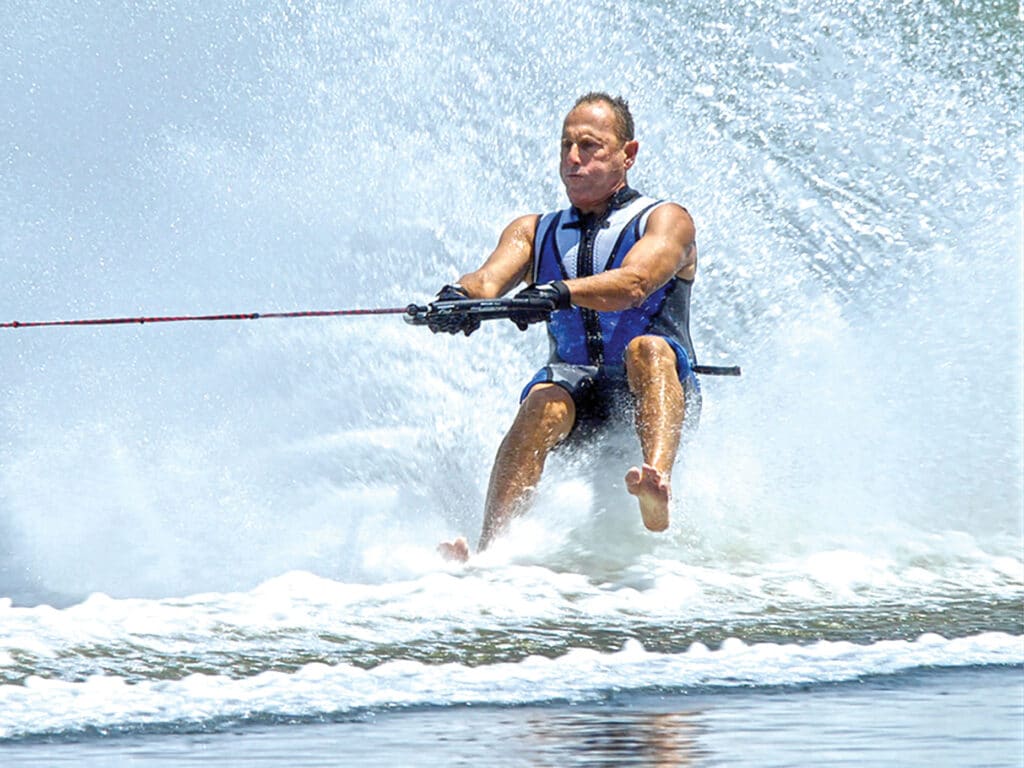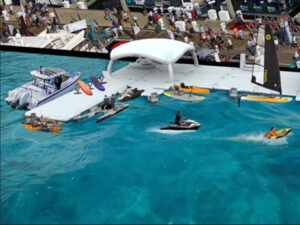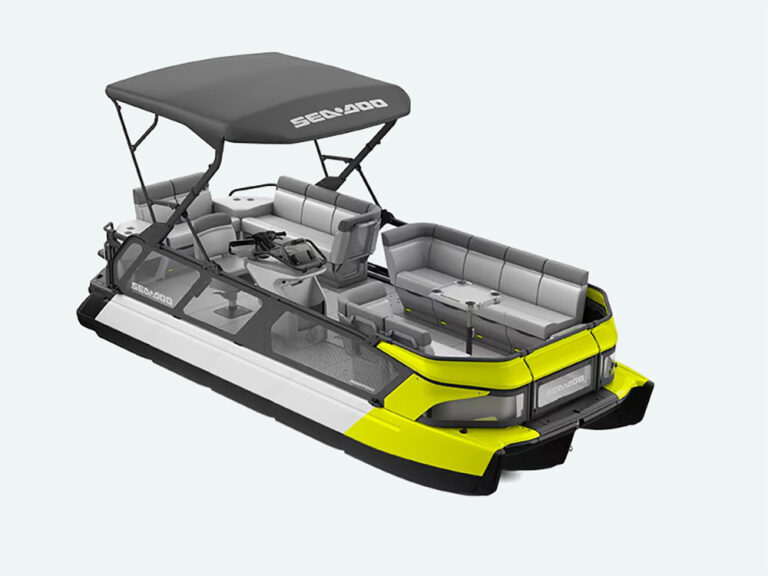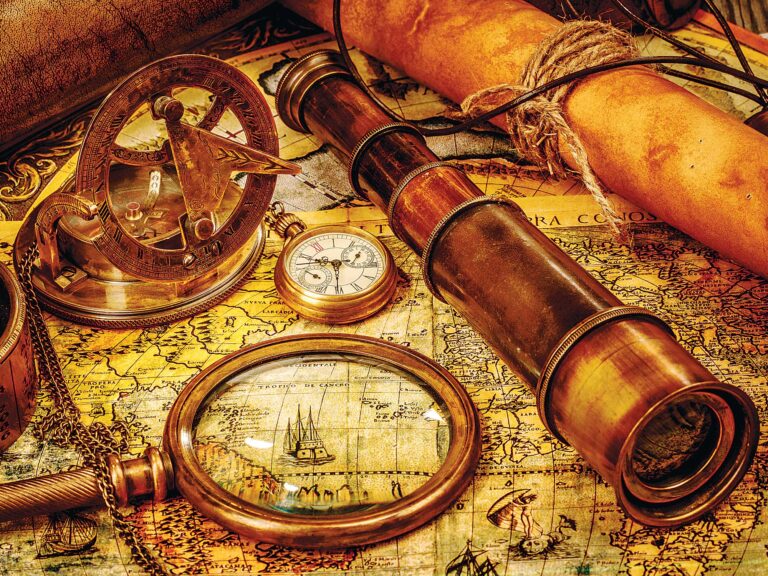
I learned to water-ski in 1975. Over the past 47 years, I have participated in all the ways of having fun behind the boat, including slalom skiing, wakeboarding and wakesurfing.
After competing in my first USA Barefoot Nationals in 1982, I moved to West Palm Beach, Florida, to train year-round. But not long after that, I suffered several injuries in an 18-month span that included a bad hamstring pull, a couple of knee sprains and a blown eardrum. I hated being off the water and analyzed why I got hurt. I also began observing others to see why and how they got injured, or how they stayed injury-free. With that knowledge, I was able to win the gold medal in the slalom event at the World Masters Barefoot Championship at 60 years of age last September.
By analyzing my own technique while learning from others, I have fine-tuned what it takes to keep me on the water and enjoying all the ways of having fun behind the boat.
I identified three major areas in which injuries can occur: poor technique, wrong or defective equipment, and overtraining. I also observed how injuries could be the result of one, two or all three areas, as was the case with my hamstring pull.
Technique
Implementing optimal technique is the best way to eliminate falls and injuries. However, to learn optimal technique, it is important to get the best coaching. Forget learning by trial and error—that is a great way to learn bad technique habits.
Watching videos of someone doing the maneuvers you want to learn is an excellent way to put a positive image in your mind. When looking for wake-sports role models, look at individuals who make it look easy and minimize body movement. Being efficient is a hallmark feature of great technique. Learn maneuvers with optimal technique from the beginning so you don’t develop bad habits.
Equipment
Use equipment such as skis, boards and bindings that specifically fit you. Bindings should fit snug and provide maximum control. A life jacket should fit snug but offer ample range of movement. Wetsuits should also fit snug to minimize water coming into the suit. Excessive water in the wetsuit adds weight, which negatively affects body position and technique. Also, more-advanced skis, boards and bindings are lighter, and that helps in minimizing weight. Stay away from using damaged equipment.
Read Next: Three Keys to Improve Your Wake-Sports Skills
Pace Yourself
Water-skiing and wake sports are so much fun that it is easy to go past the point of fatigue. Instead of thinking about quantity, think of quality and getting the most out of your time on the water. It’s much more fun to accomplish new tricks instead of falling, getting tired and possibly getting hurt.
Also, develop an awareness of how your body feels. Listen to your body, and take a break when it feels tired. When the water conditions are bumpy, I don’t work on a new trick. Instead, I do something that is easy for me, such as working on the basics. That way, I’m learning and having fun, but staying away from falls and injuries.
In addition to focusing and honing these three areas, I was fortunate to be friends with Banana George Blair, who barefoot water-skied and did everything possible behind a boat until his early 90s. He is a constant inspiration and reminder that water-skiing and wake sports are excellent ways to stay healthy and happy—and to feel forever young.









